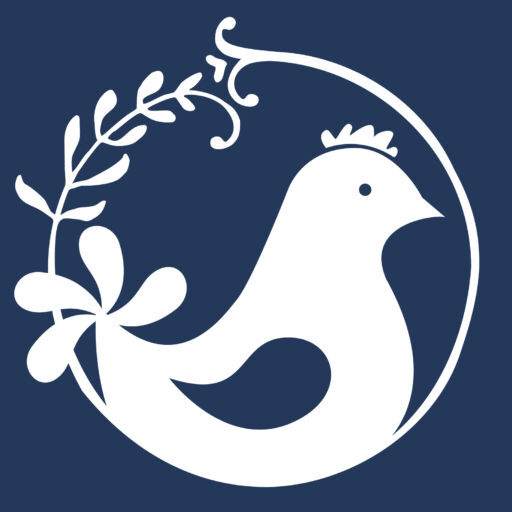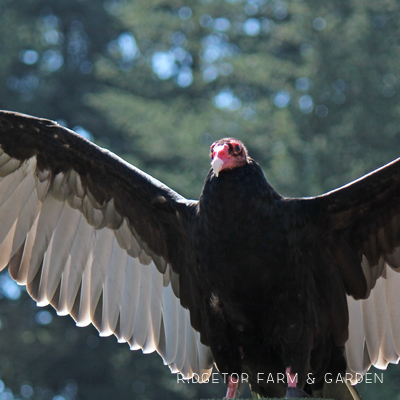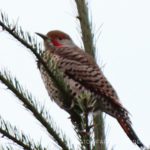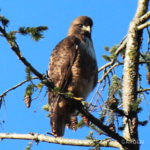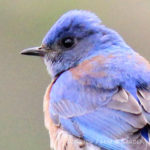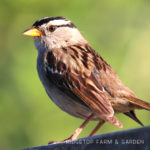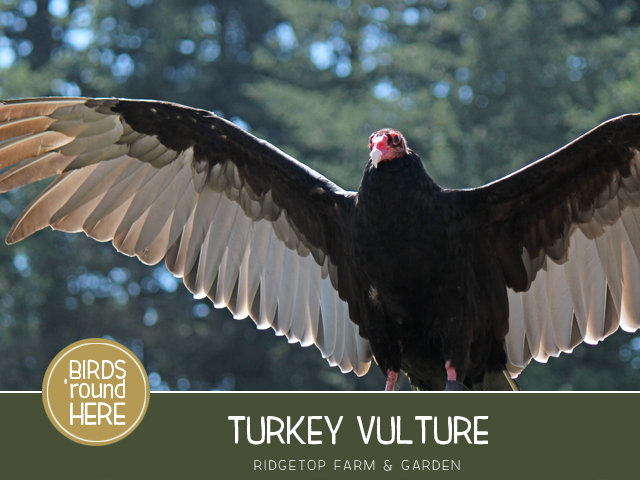
The first Saturday in September is International Vulture Awareness Day, so my bird pick for this month is the Turkey Vulture.
They are often mistakenly referred to as the Turkey Buzzard. They are also often frowned upon because of their gross habit of eating roadkill. I, however, appreciate their clean up efforts. Also, they prefer their meal already dead which means my chickens and goats are safe from these large birds.
IDENTIFICATION
HEAD: bright red. primarily unfeathered
BILL: white
BODY: brown/black
WINGS: brown/black. underside of flight feathers is ivory
Notice the red, nearly bald head & white curved bill.
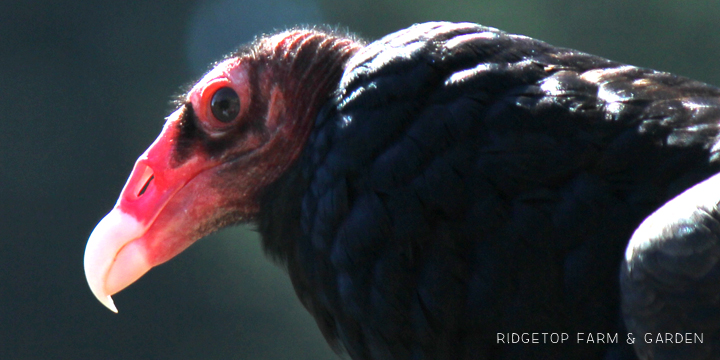
During a Birds of Flight show at the Oregon Zoo, I was able to get a good look at the light colored flight feathers.
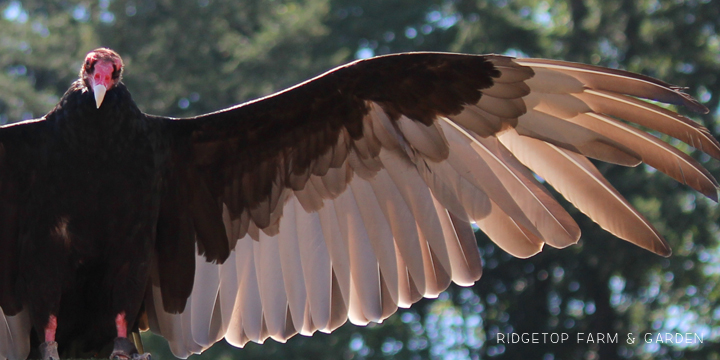
From a distance, Turkey Vultures appear black. However in actuality, they have a lot of brown tones mixed in.
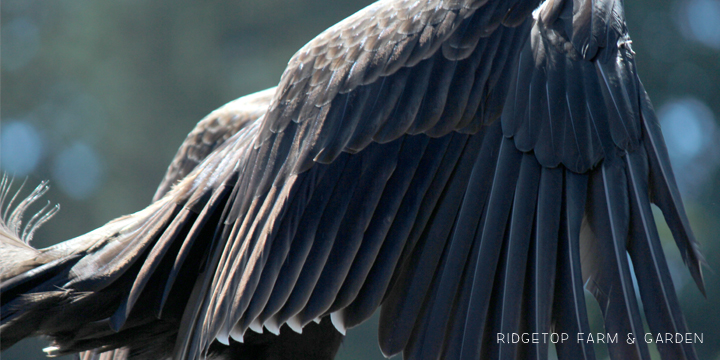
HABITAT
Turkey Vultures can be found in North and South America, typically in open wooded areas, deserts, and countrysides.
This one is circling the hill behind our house.
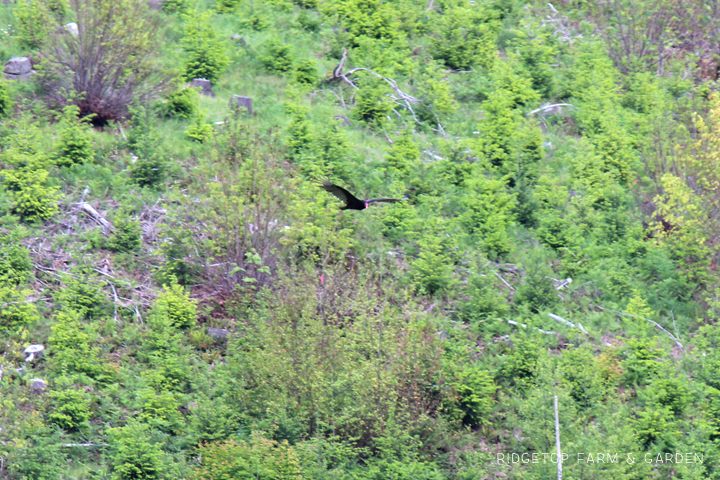
FEEDING
Turkey Vultures are scavengers, feeding on dead animals. Their incredible sense of smell helps them find their next meal.
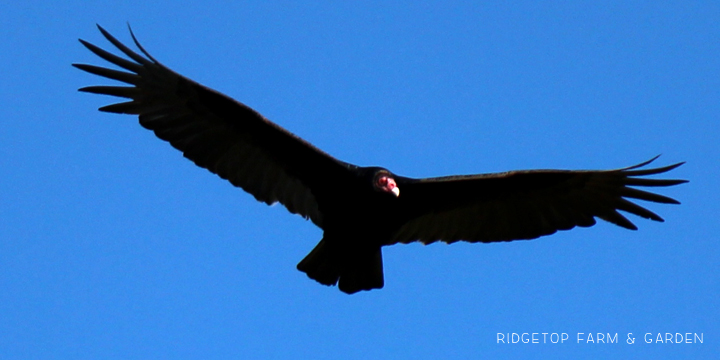
FRIENDS & FAMILY
FAMILY: New World Vultures
SCIENTIFIC NAME: Cathartes aura
Typically, I notice a small group of two or three Turkey Vultures soaring overhead. Occasionally, there is a larger flock. Even less often, I spot them flying with other large birds.
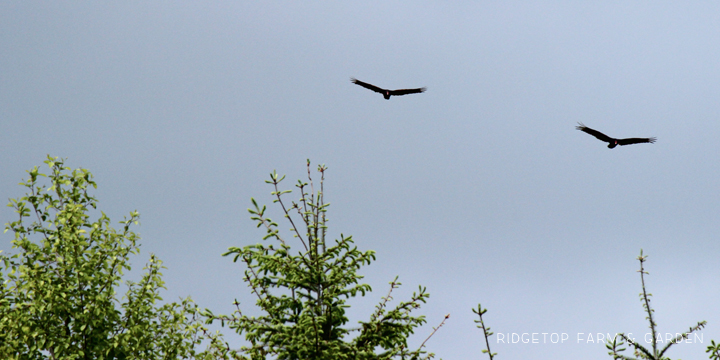
FLIGHT
Turkey Vultures glide through the sky with their wings slightly raised. Their wingtips have long separated “fingers.”
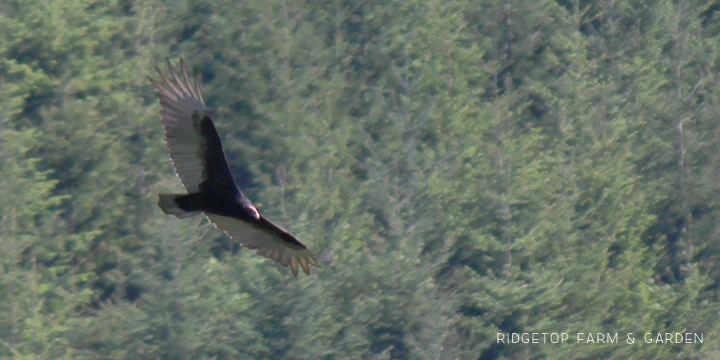
Right Photo: riding the thermals high in the sky
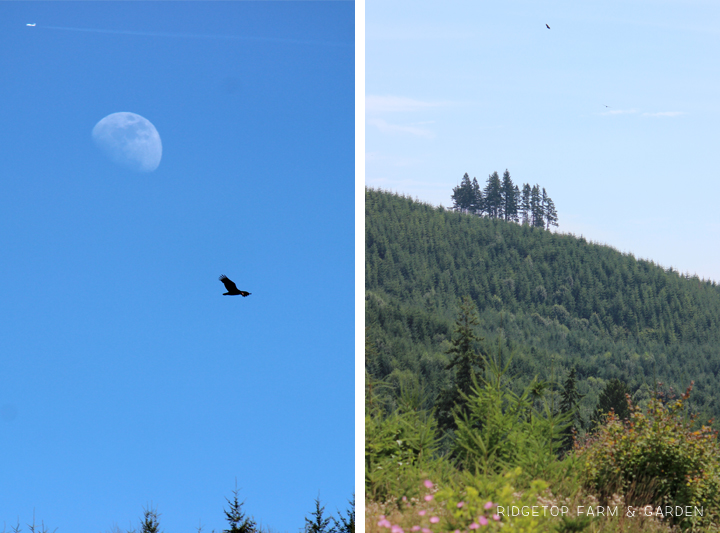
PHOTO GALLERY
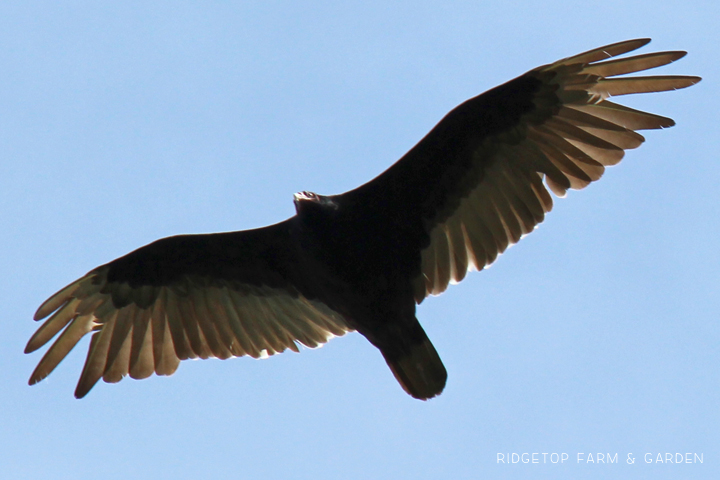
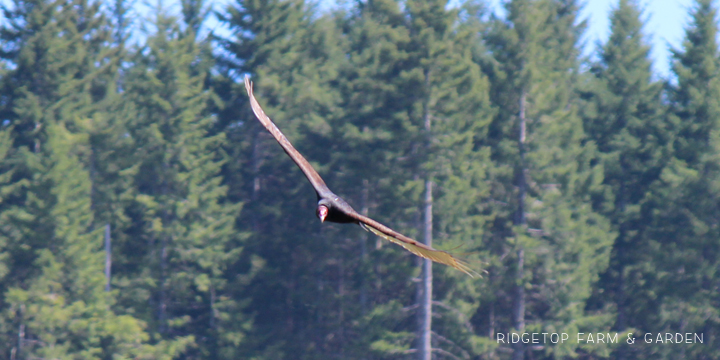
We spotted this Turkey Vulture in the Redwoods.
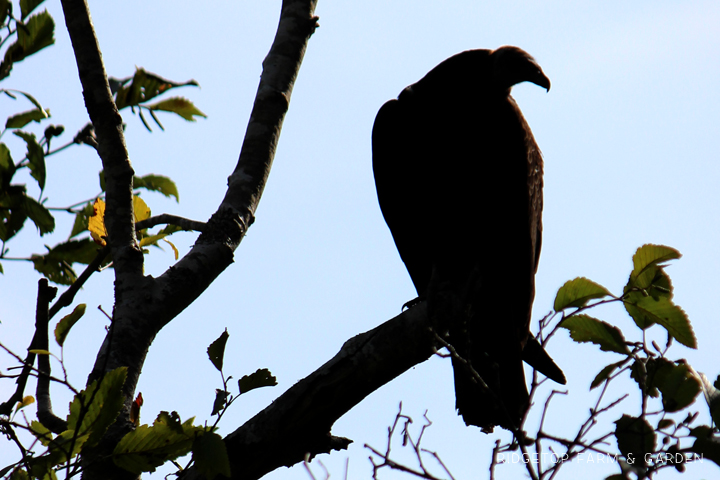
FOR MORE INFORMATION:
For more info about these large, amazing birds check out my posts from International Vulture Awareness Day in 2013 and a trip to the Audubon Society, where I saw Ruby, a Turkey Vulture used as an education bird.
